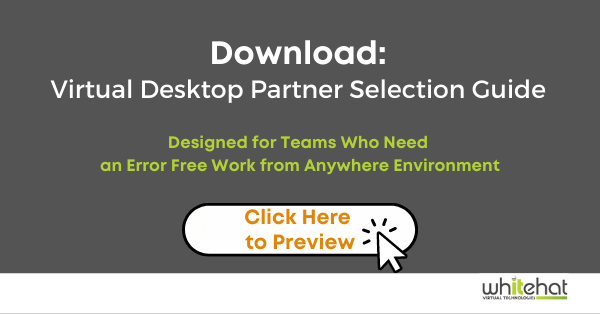In general, the more flexible the IT infrastructure is, the more successful organizations are at surviving and thriving when new ways of working, like mandated work-from-home, are introduced. The faster your company can adapt, the better chance it stands of not only getting back on track, but flat out surviving. New problems create opportunities for new solutions. Having flexibility in your IT infrastructure in real terms means organizations have a wider range of options at their disposal to meet new problems.
Rigidity in IT can be very efficient and cost effective, but trading too much flexibility for cost savings can be a trap that feels good right up until it doesn't. With COVID-19, the road took a hard turn, and the way we work changed dramatically changed.
Those with flexible IT infrastructures are making that turn while those with rigid IT infrastructures, unable to turn, went straight through the barricades, over the ditch, and coming to rest in a dusty field somewhere wondering what the heck just happened.
To meet increasing customer demands, your organization could benefit by moving to an always-connected workplace. There are an extensive range of virtual desktop solutions that provide your employees the seamless, secure access to all of the apps and data they need to get their job done. 
Here are a few of the 8 ways to introduce more IT flexibility with IT infrastructure monitoring so you can make the next turn even if you are still scrambling to recover from the last one.
Enable Cost Effective IT
When an IT team is poorly staffed or poorly managed, it creates a snowball effect, and the losses it creates often fly under the radar. Enhancing managed IT services with a third-party provider can provide the missing piece of IT infrastructure monitoring that no one else has time to implement.
Enable Work from Any Device
Centralizing the desktop management is an incredibly difficult task in the face of a widely distributed computing environment and the corporate personnel, who gradually need secure on-demand access to their desktop environment from any place. Businesses can avoid security and user experience issues by partnering with a managed VDI service provider.
Effectively Track Devices
Virtual Data Infrastructure facilitates the optimal use of hardware by enabling access to the multiple Windows environments (Business—Personal, Dev—Test) from the same client device. They also enable organizations to pursue the “Bring Your Own Device Programs” for the employees, where they use their personally owned hardware for both personal and work. This helps IT to keep the corporate environment secure even when it is accessed from the unmanaged devices.
Monitor & Improve Logon Times
Citrix partners can utilize tools that deliver a custom alert notification if a logon crosses any defined threshold. Monitoring logon times allows your IT department to get ahead of slow networks that cause productivity losses before they reach everyone in the organization.
Improve Security and Compliance
Ensuring that the information on the PCs is effectively backed up and can be restored when the PCs fail or files are lost is an important challenge. Even when the data is effectively backed up, the risk of the PC theft threatens the security of the significant data. A managed security services provider can help you build compliance into your day-to-day IT Infrastructure.
Enable Business Continuity
Although backup and disaster recovery processes make sure that a business can recover its systems and data within a reasonable time, there is still the chance of downtime from a few hours to many days. The point of a business continuity plan is to give businesses continuous access to their technology and data, no matter what. Zero or minimal downtime is the goal. With built-in IT infrastructure monitoring, your organization is ready to tackle downtime quickly and efficiently.
Centralize IT Help Desk Support
Adequate IT help desk support is a MUST in today's distributed workforce environment. Work hours have extended in the remote work environment; employees need access to IT resources outside of the typical 9-5 operational hours. With a managed IT services partner, you can build a successful centralized IT Help Desk Support tool and monitor it for shortcomings.
Enhance Microsoft Capabilities
Last year, there were over 100,000 end-users connecting with Microsoft Teams, and many accept slow or poor connectivity as part of the norm in remote work. Microsoft Excel's computational performance is often compromised in remote environments, and OneDrive file syncs are unreliable. WIth the right monitoring in place, IT teams will know about the issue before users start submitting help desk tickets, and give them a head start on resolving the issues.
Companies small and large are now opening projects to move their desktops from the physical model to the virtual to get the advantages of the simplified desktop management, user portability, security and operating system migrations. Make sure your company has the ability to comprehend if the actual user experience is what was expected. If user’s aren't able to work security and efficiently, the failure will show up in the bottom line of business. Don't put your project at risk; empower your end users with the right infrastructure by partnering with an experienced IT consulting and service team.





Leave Comment